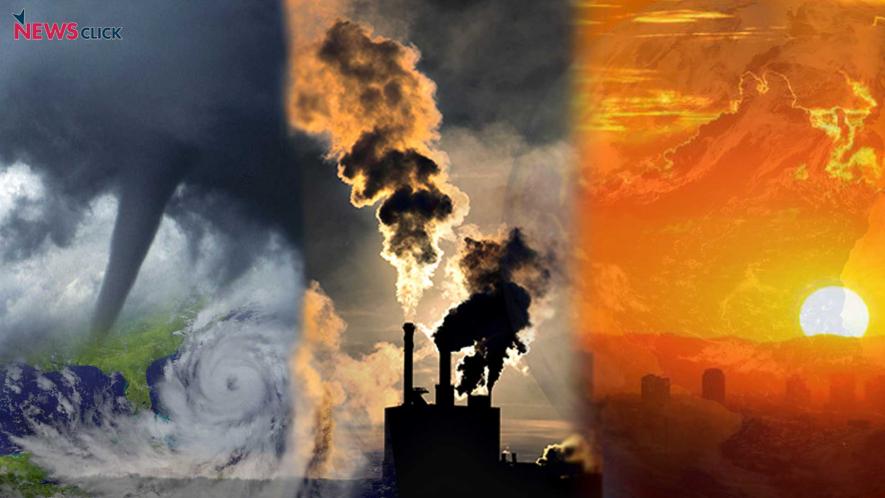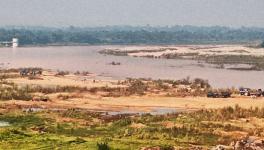Kerala: Churches vow to Mitigate Climate Change Together

Representational use only.
On Saturday, the Church of South India (CSI), with the representation of Catholic priests, declared its resolve to “stand in defence of a global climate system that is safe for all creation”.
A gathering of church leaders, students in seminaries in the vicinity, schoolteachers and college staff from Christian institutions gathered at the CMS College, Kottayam, to mull over possible action under the guidance of scientists Dr TV Sajeev of the Kerala Forest Research Institute and Dr Roxy Mathew Koll of the Indian Institute of Tropical Meteorology, Pune.
Dr Koll, who has served as the lead author of the Intergovernmental Panel on Climate Change (IPCC), explained how the Indian Ocean was heating faster than other oceans, causing a massive spike in the number of cyclones. Warm air holds more moisture and holds it longer – so there might be prolonged spells of no rain and then intense, heavy rain, the scientist explained. The combination of warmer temperature and higher humidity could prove a significant health hazard, as the human body’s ability to regulate its temperature is compromised once high moisture in the atmosphere prevents the evaporation of sweat.
The commitments already made by governments across the world are inadequate to contain the rise in global temperature to less than 2 degrees above the global average, the scientist said, adding that the lifespan of the carbon dioxide already in the atmosphere would extend across centuries – so even if all emission is curtailed, what has already been emitted would not be absorbed for centuries.
Since the First Industrial Revolution, global temperature has risen by 1.2 degrees C above the average of 14-15 degrees C. Even a change of this much has caused massive changes in global weather, so it is hard to accurately predict what a further increase might cause, Dr Koll said, explaining that sea levels are estimated to be rising by around 3 mm each year. Heating could increase the pace at which seas rise; given the slope of land near the coasts, ingress of the sea into the land will be hard to contain. Already, in coastal Kerala, there are people who hold land titles for areas currently under the Arabian Sea.
Storm surges, ingress of saltwater, and changes in the fish population, with species migrating polewards and diving deeper into the oceans, have all been noted. Given the frequency of flooding in Kerala, the state must prepare not a flood control policy but a policy for living with floods, the scientist said, adding that even as the intensity of rain increases, the total rainfall received is declining, so there is additional need to recharge groundwater and revive ponds and streams.
One major cause of high carbon dioxide emission in Kerala is construction, Dr Koll noted, adding that in the last Census, it was revealed that about 12 lakh houses in the state had no inhabitants. Even so, it is a big Malayalee dream to have a home of one’s own, and construction continues. Granite is required for construction, and there are about 6,000 quarries in the state, although only about 1,000 of them operate legally.
In his presentation, Dr Koll showed one slide of Kerala from 1973 – thickly forested and green all over; and another from 2016, where vast parts of Central Kerala showed land stripped of vegetation. There was, he said, 50% shrinkage of forest cover in the state at that time. This affects rainfall patterns not only locally but also across the peninsula – transpiration from the Western Ghats contributes to rain in Tamil Nadu.
Dr TV Sajeev began by remarking that he is often asked why he spends his life studying forests when the real problems lie in areas inhabited by human beings. He explained that if one measures regions by the richness of resources, the forests would be among the most resource-rich – it requires no external inputs at all and yet sustains a variety of life. Whether soil, vegetation or nutrition, it is all present within the forest, and forest dwellers, who city dwellers think are backward and uneducated, have learned to live with what resources they have at hand – when they fall sick, they often cannot go to hospitals.
“They understand their own bodies, and they learn what in their environment might help them heal. The city dweller, however, has lost all knowledge of even his own body – in sickness, the city dweller rushes to the doctor to find out what might be wrong,” he lamented.
When there are disease outbreaks in crops, for instance, it is by taking healthy samples from the forests that plant health is restored – this happened years ago when the pepper vines in Kerala were affected by bacteria. There was a sudden and rampant loss of produce, and pepper vines from Silent Valley were used to revive the crop. Forests, Dr Sajeev said, were “banks of good health” – they are concentrated spots of high biodiversity, and the health of the population depends on this diversity. When there is greater diversity in species –there is more robust health.
Even as the climate changes, when there is greater diversity and good health, recovery from disasters is quicker, Dr Sajeev said. “If one were to meet with an accident and rush to the hospital, how long one might need to spend at the hospital will depend on the general state of health – if one is diabetic or suffering from high blood pressure, there is the likelihood that recovery will be slow. If one is otherwise in good health, recovery could be swift. It is like that even with nature – if topsoil and vegetation are conserved, the effects of climate change will be more easily mitigated. That is why, even with a global problem like climate change, mitigation can be local.
Questions from the audience showed a high level of interest in climate change issues. One person asked about population explosion, to which Dr Sajeev responded that an increase in population was not a big problem; if the numbers of forest dwellers even doubled, he said, the resources to sustain them won’t be hard to find. The problem arises only when the population of the rich increases.
In the audience at the 200-year-old CMS College were schoolteachers and scholars of divinity, who agreed that an understanding of climate change impacts on other species would be a spiritual endeavour. The meeting concluded with a declaration that the churches would advocate for climate justice and thus strengthen hope and peace.
Get the latest reports & analysis with people's perspective on Protests, movements & deep analytical videos, discussions of the current affairs in your Telegram app. Subscribe to NewsClick's Telegram channel & get Real-Time updates on stories, as they get published on our website.























